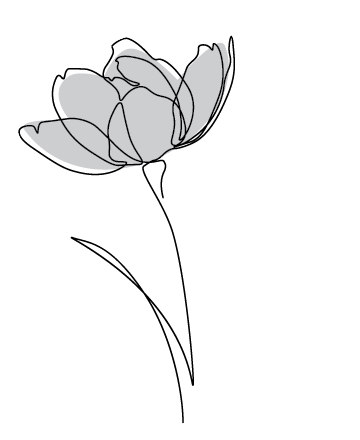
First and foremost I have to thank my agent, Kathy Green, for her constant support. Without her belief in the project, it would never have come to fruition. And, of course, I need to acknowledge my editor at Llewellyn, Angela Wix, as well as Kat Sanborn. They, too, believed. And I thank Hanna Grimson for a masterful job at copyediting.
Five people also offered their advice, careful edits, and constant encouragement. Dr. Charles Corr has been my mentor and friend for almost forty years—over half my life. I often wonder if he ever realized he would be my foremost editor for all those years. I need, as well, to acknowledge his faithful wife, Donna, for her years of friendship and support. As I indicate in the introduction, Dr. Terri Daniel has been instrumental in this project. Not only did she elicit my initial interest, throughout the writing process she, too, offered edits, comments, and most importantly, a foreword. Larry Laterza is my oldest friend—literally from second grade. He not only strongly encouraged this book but also assisted with his comments and edits. And another of my oldest friends, Lynn Miller, through many years, encouraged me to nurture my interest in this field—sharing her remarkable experiences in her journey through life.
My many colleagues in the Association for Death and Counseling (ADEC) and the International Work Group on Death, Dying, and Bereavement (IWG) also provided constant support and friendship through so many years. At the risk of leaving off some critical names, I do want to especially acknowledge Thomas Attig, Leslie Balmer, Robert Bendiksen, John Birrell, Phil Carverhill, Betty Davies, Stephen Fleming, Chris Hall, Neil Heflin-Wells, Nancy Hogan, Terry and Gail Martin, Robert Neimeyer, Danai Papadatou, Colin Murray Parkes, Van Pine, Therese A. Rando, Henk Schut, Sherry Schachter, Kathleen Shears, Margaret Stroebe, and J. William Worden for all the stimulation and camaraderie contributed over so many years.
My college, now sadly closed, was a beacon of support throughout my years there. While there are so many colleagues I can recognize here, Marie Ribarich, Wendi Vescio, Joe Biscoglio, Diane Lewis, and Vera Mezzacuella do deserve special mention. As do three others: Claire Lavin, Dennis Ryan, and Lynda Shand. They all shared my interest in end-of-life. In fact, Dennis’s work on dreams is noted in the book. But all three contributed support, stimulation, and companionship throughout my decades at the college.
For almost thirty years, I have had the privilege of being a consultant to the Hospice Foundation of America (HFA). This has helped me professionally in so many ways. Each year, preparation for a new teleconference and accompanying book continues to make me stretch my professional knowledge. In addition, I have enjoyed the professional stimulation and personal friendships of so many wonderful people I have met there including the late Jack Gordon, Myra MacPherson, David Abrams, Lisa Veglahn, Norman Sherman, Lindsay Currin, and the rest of the HFA staff—past and present. I have to give special thanks and mention to my often-collaborator and co-editor and always friend: HFA’s CEO, Amy Tucci.
Most importantly, I need to acknowledge all those in my personal life who are always a source of pride and joy. My son, Michael, and his wife, Angelina, my grandson, Kenny, and granddaughter, Lucy, make it all seem so worthwhile. I treasure them always.
I appreciate the gift of godchildren as well—William James Rainbolt, Austin Rainbolt, Scott Carlson, Christine Romano, and Keith Whitehead. They and the other members of my intimate network of family and friends, including Kathy Dillon, my sister, Dorothy, and my late brother, Franky, and all of their families, as well as Ellie Andersen; Jim, Karen, and Greg Cassa; Lynn Miller; Kim Rainbolt; Lisa, Cody, and Ciarra Carlson; Tom and Lorraine Carlson; Ken and Elaine Gilmore; Chris and Mary Anderson; Linda, Russell, and Ryan Tellier; Liz Galindo; Peter Levins; and Diane, Evan, and Jesse Brohan all provide nurturing, encouragement, respite, friendship and, most importantly, laughter.
The internet has allowed contact with long-lost friends. To that technology, I owe renewed ties to Ed Hodges, Alice Hum, Kathy Nacey, Bruce and Lynne Prochnik, and Pawnee and Glenda Rowe—all of whom were important presences at different points in my life as I navigated childhood, adolescence, and young adulthood, and now not only offer warm reminiscence but continued friendships.
I also have gratitude for those pioneers who are cited throughout this book. Certainly, people like Bonnie Lindstrom, Kenneth Ring, Sam Parnia, Raymond Moody, Gregory Sushan, Patricia Kelley, Maggie Callanan, Bruce Greyson, and Carol Zaleski—to name just a few of the individuals cited in these pages—are intrepid pioneers. I thank all I have referenced for their work. Four, however, bear special mention as they have gifted me not only with their research and writings but with friendship. I have already noted that this book would not have been possible without Terri Daniel. Dr. Louis LaGrand, now deceased, has been a friend from the early days of ADEC, and his pioneering work on extraordinary experiences has been a great gift to the field. Dr. Allen Kellehear, another colleague and friend, contributes extensive research on near-death experiences. Finally, one of my mentors, Dr. Robert Kastenbaum, taught me to have an eclectic set of interests in the field—his wide range of interests, his original way of thinking, and his own foray into this area are an underlying impetus to this book. I salute you all!
Finally, I need to acknowledge all those people—family, colleagues, students, friends (even their children)—who in their own struggles with dying, death, and grief shared their extraordinary experiences at life’s edge. They taught me so much.